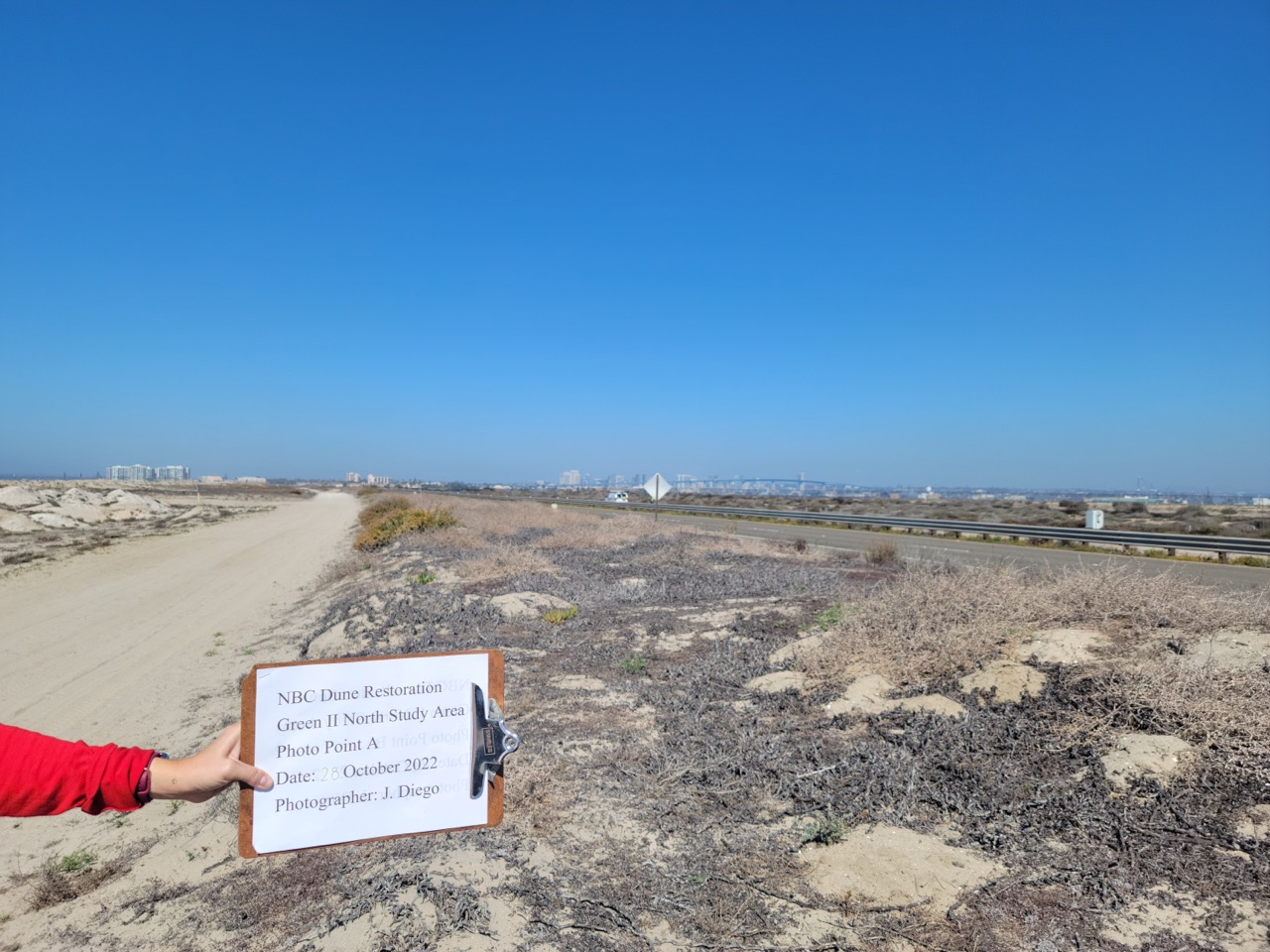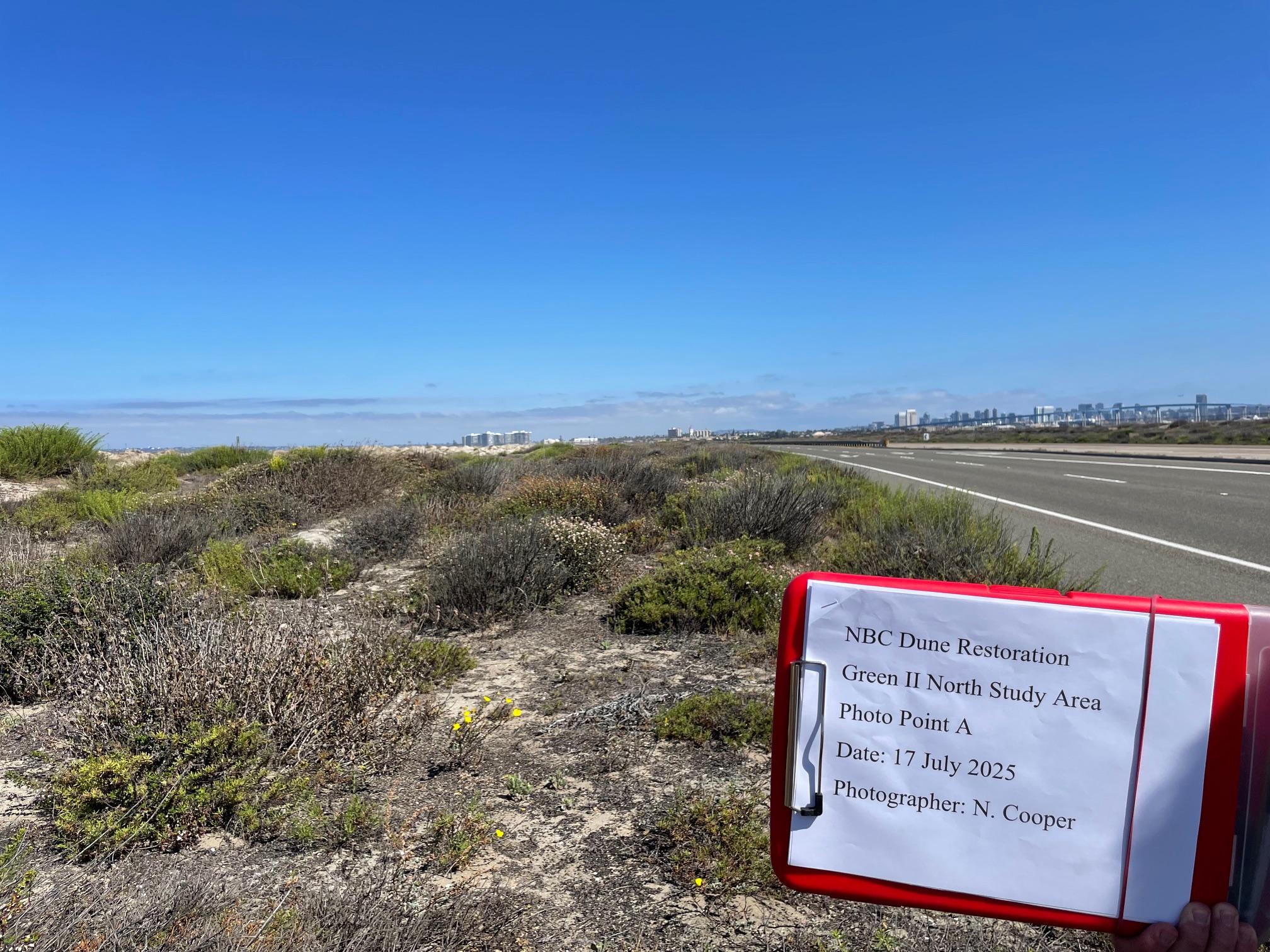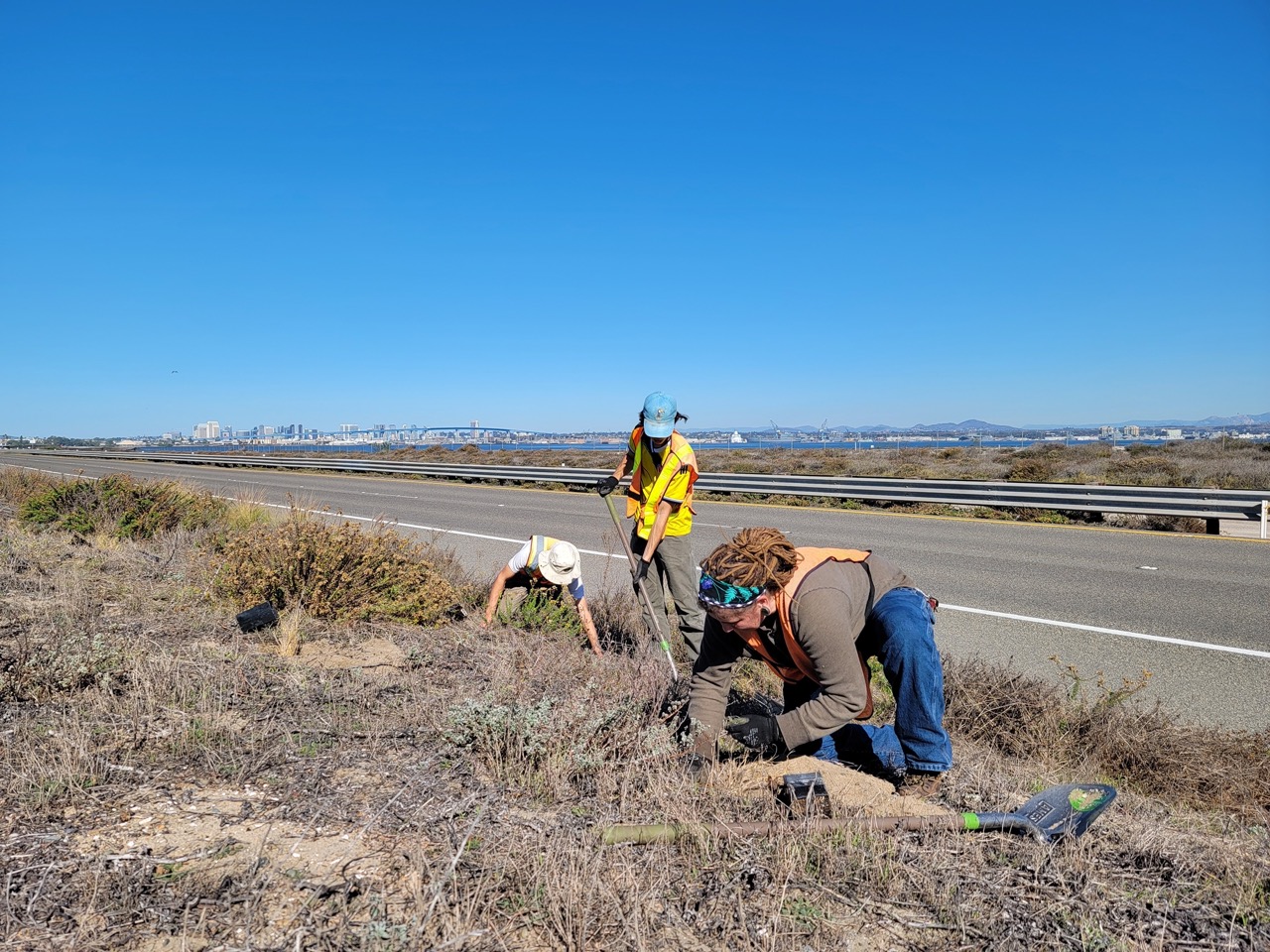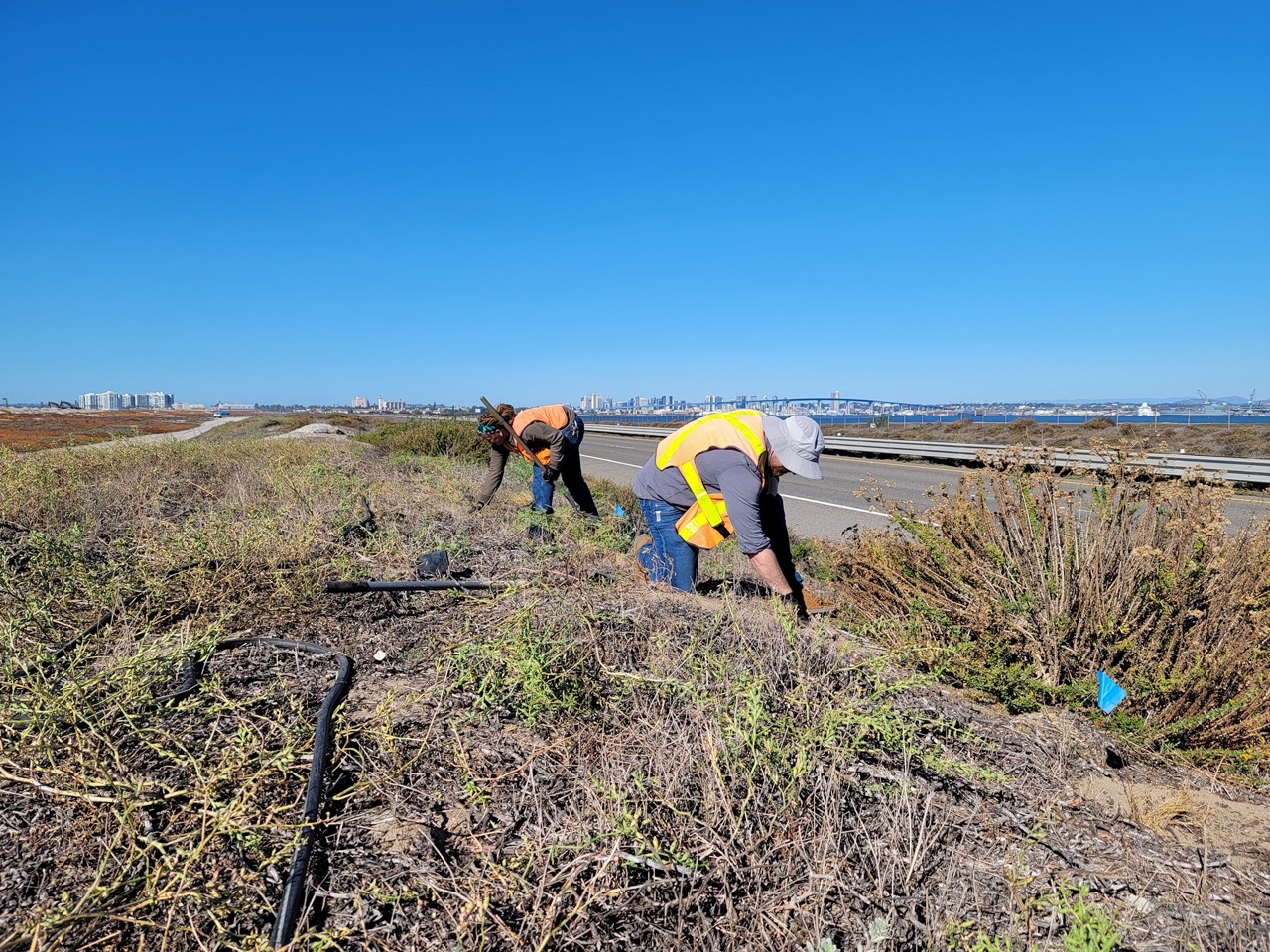
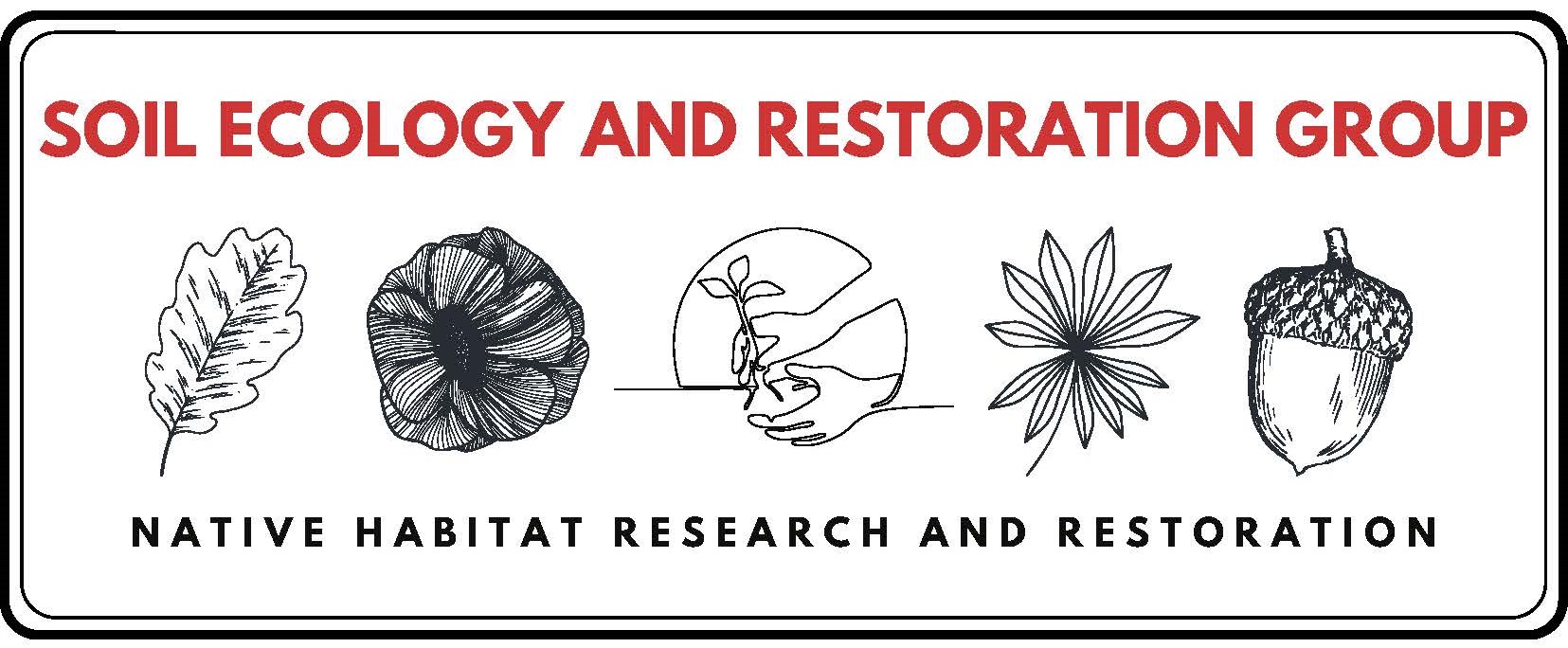
Introduction
The vegetation occurring along the coastal strand of California is a dynamic community subjected to a variety of environmental stressors such as wind, salt spray, high temperature, and lack of moisture. In San Diego County, the largest extent of Ambrosia chamissonis–Abronia maritima Alliance (dune mat) can be found from the Silver Strand to the Tijuana River mouth. This Alliance found on the Naval Base Coronado (NBC) supports a high diversity of plant and animal species, some of which received a California Native Plant Society 1B rating (rare, threatened, or endangered in California or elsewhere), such as Nuttall’s acmispon (Acmispon prostratus), Coast wooly heads (Nemacaulis denudata var. denudata), beach golden aster (Heterotheca sessiliflora subsp. sessiliflora), and Brand’s phacelia (Phacelia stellaris), or are federally listed, such as the California Least Tern (Sternula antillarum browni) and the Western Snowy Plover (Charadrius nivosus nivosus). In addition to the habitat they provide, native plants stabilize the dunes, which protects adjacent inland vegetation communities, roads, and habitations.
Coastal strand vegetation in San Diego County is highly disturbed in all areas where it is found. Invasion by iceplant (Carpobrotus edulis), sea rocket (Cakile maritima), and other non-native plant taxa has led to a decrease in native species richness and cover. C. edulis and C. maritima display competitive superiority, displace native plant taxa (Zedler et al., 1992), and provide little food and poor habitat for wildlife. Thick mats of C. edulis also alter dune morphology by inhibiting the natural movement of sand within dunes, thus increasing the height of dunes.
Project Objectives
In September 2021, the Department of the Navy and the Soil Ecology and Restoration Group (SERG) of the San Diego State University Research Foundation (SDSURF) entered into an Agreement with the purpose of restoring 4,112 square meters of dune habitat located in NBC. To fulfill this objective, the following specific tasks were implemented: (1) treat and/or remove iceplant and other non-native species; (2) collect and propagate appropriate native plant material for outplanting; (3) outplant container stock; (4) maintain the restoration site; (5) monitor the site; (6) implement remedial measures, as necessary, to achieve success criteria; and (7) prepare reports that document project activities and results.
Project Summary
- Native seed and cuttings were collected onsite and used for outplanting
- Survival of outplants around 80%
- Increase in native vegetation cover versus non-native plant cover
- Native species richness increased over time
- 2,354 liters of non-native biomass including, but not limited to, Maltese star-thistle (Centaurea melitensis), Carpobrotus edulis, and Cakile maritima were removed from the project site in one year alone
- The Project site was and is being maintained and monitored by SERG
